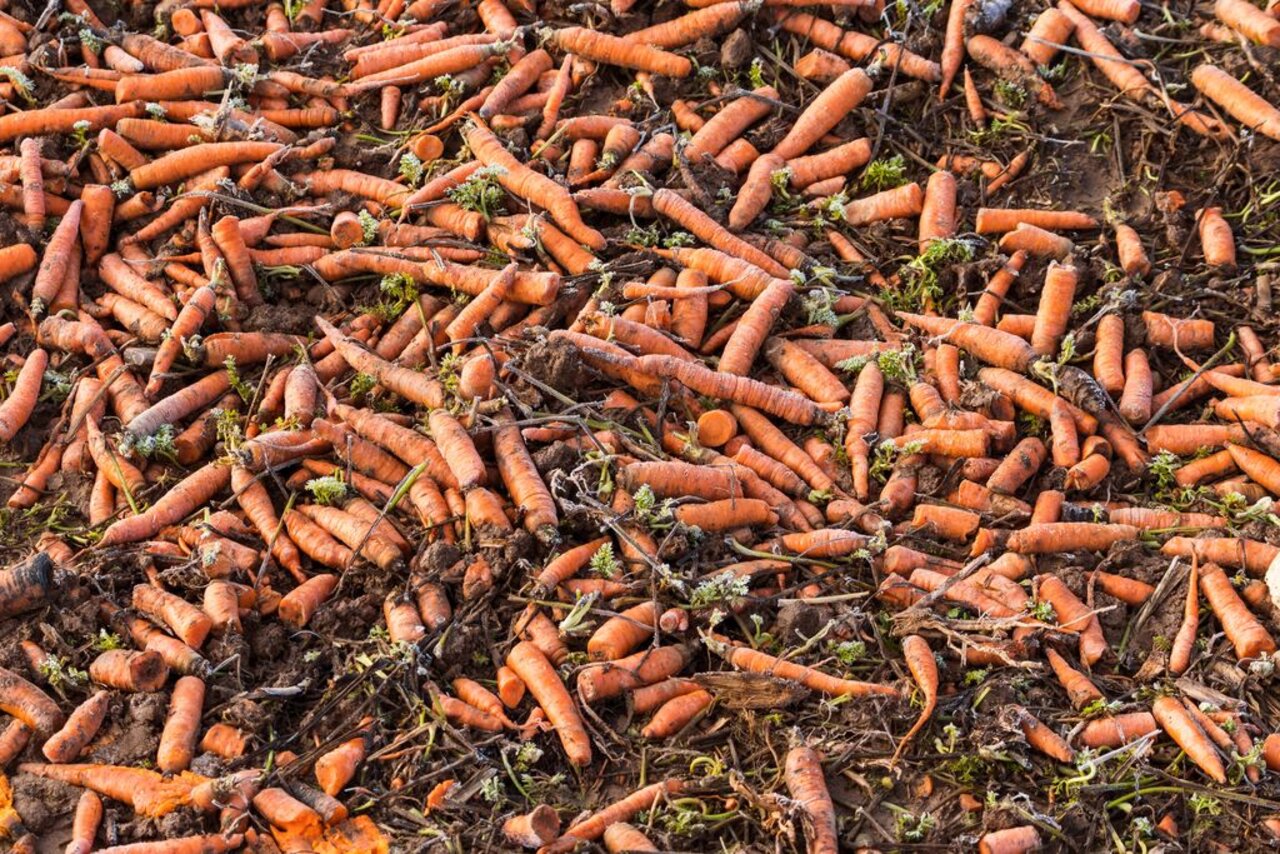Project
Food losses at the producer-retailer interface - causes and options for action

Options for action to reduce food losses at the interface between production and retail - on the example of fruit and vegetables
The United Nations, the EU and Germany are pursuing the goal of being less wasteful with food. But what options are available to achieve this goal?
Background and Objective
A quarter of the water used in agriculture worldwide, a land area as large as China and 4.4 gigatons of CO2 equivalents: This is how the FAO and the Food Loss and Waste Protocol quantify the annual resource footprint that results solely from the production of all disposed and lost food.
In this doctoral project, we investigate the causes of food losses from agricultural production up to retail and options for reducing these, using the example of fruit and vegetables. Although the majority of all food loss and waste in Germany can be traced back to private households, a considerable proportion of 30 percent is attributable to the value chain from primary production up to retail. The uncertain amount of pre-harvest losses is not even quantified.
Research to date suggests that the interactions between the stages and actors of the value chain influence the occurrence of food losses. These inter-stage causes and mechanisms are examined in more detail in this research project.
Target Group
Scientists, political decision-makers, primary producers, retailing companies
Approach
We examine three sub-aspects that build on one another:
- Market power imbalances: Using interviews with experts, we examine how power imbalances are reflected in the supply chain and promote the occurrence of food losses.
- Quality standards: Within a subproject, using a selection of relevant fruit and vegetable crops, we quantify the proportion of food losses that can be attributed to the product requirements of retailing companies. Building on this, we give recommendations on how the requirements should be adapted in order to reduce the resulting losses.
- Options for action: From the interview and questionnaire data, we derive which political instruments can work towards reducing food losses.
Data and Methods
Interviews with experts and questionnaire studies form the basis of the research project. In qualitative interviews with producers, producer organizations and the food retail sector, we gain a deep insight into the interface and the causes of food losses between production and retail. Subsequent quantitative questionnaires in the fruit and vegetable supply chains are intended to provide information about the quantities lost and their causes. We work closely with a food retail company and with the dialogue forums.
Our Research Questions
- How are interactions in the food value chain influenced by power imbalances, and how does this lead to food losses in the upstream value chain of fruit and vegetables?
- How high are the food losses caused by the quality requirements of food retailing companies for fruit and vegetables, and what adjustments are necessary for a reduction?
- Which politicy instruments could initiate a reduction in food losses? Which political instruments could support private-sector options for action to reduce food losses?
Results
The evaluation of the interviews with the experts showed that power imbalances between production and retail emerge in the form of
- low commitment in terms of ordered quantities
- very short-term orders
- lack of acceptance guarantees
- company-specific product requirements regarding appearance, packaging and pesticide residue limits
- determination of orders and advertising on the customer side
Hence, the shifting of economic risks into the upstream value chain is a trigger for food losses in production.
One specific driver of food loss was investigated in more detail through the online survey: The quality requirements that retailers place on fruit and vegetables. We were able to show that 15 % of the total quantity does not meet the company's requirements. As a result, 6 % is no longer used for human consumption, while the rest finds alternative marketing channels.
publications in the frame of the thesis:
Market power and food loss at the producer-retailer interface of fruit and vegetable supply chains in Germany, DOI: 10.1007/s11625-021-01083-x
Product specifications and business practices as food loss drivers – A case study of a retailer's upstream fruit and vegetable supply chains, DOI: 10.1016/j.jclepro.2023.137940
Policy instruments to reduce food loss prior to retail – Perspectives of fruit and vegetable supply chain actors in Europe, DOI: 10.1016/j.wasman.2023.09.019
Links and Downloads
partner project: Quality requirements and food loss in fruit and vegetables
http://www.fao.org/sustainable-development-goals/indicators/1231/en/
https://www.lebensmittelwertschaetzen.de/strategie/nationales-dialogforum/?L=0
Thünen-Contact

Involved Thünen-Partners
Duration
10.2019 - 9.2023
More Information
Project status:
finished
Publications to the project
- 0
Herzberg R (2023) Beyond the blemishes : Causes and governance of food loss in upstream fruit and vegetable supply chains. Göttingen: Georg-August-Univ, xi, 121 p, Göttingen, Univ, Fak für Agrarwiss, Diss, 2023, DOI:10.53846/goediss-10174
- 1
Herzberg R, Schneider F, Banse M (2023) Policy instruments to reduce food loss prior to retail - Perspectives of fruit and vegetable supply chain actors in Europe. Waste Manag 170:354-365, DOI:10.1016/j.wasman.2023.09.019
- 2
Herzberg R, Trebbin A, Schneider F (2023) Product specifications and business practices as food loss drivers - A case study in a retailer's upstream fruit and vegetable supply chains. J Cleaner Prod 417:137940, DOI:10.1016/j.jclepro.2023.137940
- 3
Herzberg R, Schmidt TG, Keck M (2022) Market power and food loss at the producer-retailer interface of fruit and vegetable supply chains in Germany. Sustain Sci 17(6):2253-2267, DOI:10.1007/s11625-021-01083-x

![[Translate to English:] [Translate to English:]](/media/_processed_/3/e/csm_AdobeStock_249730128_92f14d3a63.jpeg)
![[Translate to English:] [Translate to English:]](/media/_processed_/3/e/csm_AdobeStock_249730128_a6fcf4c893.jpeg)





